-
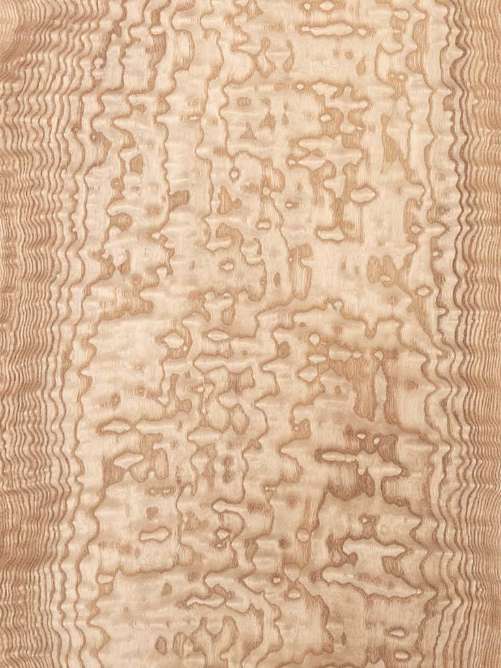 Tamo is the name given to highly figured, rotary cut, Japanese ash. This highly prized veneer is known and sought-after worldwide for its stunning, lustrous, Pommele or "peanut shell" figure—a lively, variable, swirling background with peanut or blister figuring. Colors range from brownish-tan to gray to almost white—all of which provide rare and uncommon options for highly decorative interior spaces and custom furniture. Learn About Veneer Cut & Matching
Tamo is the name given to highly figured, rotary cut, Japanese ash. This highly prized veneer is known and sought-after worldwide for its stunning, lustrous, Pommele or "peanut shell" figure—a lively, variable, swirling background with peanut or blister figuring. Colors range from brownish-tan to gray to almost white—all of which provide rare and uncommon options for highly decorative interior spaces and custom furniture. Learn About Veneer Cut & Matching -
 Actually a maple by genus, sycamore is among the most valuable native broad-leafed trees in Europe. Nearly white in color with a fine, close texture, notable uniform structure, and straight grain that may be figured, this light color wood evokes a minimalist elegance. The flat cut veneer shows the characteristic cathedral pattern. It readily accepts stains and can be dyed to many colors, most popularly a silver-gray. Learn About Veneer Cut & Matching
Actually a maple by genus, sycamore is among the most valuable native broad-leafed trees in Europe. Nearly white in color with a fine, close texture, notable uniform structure, and straight grain that may be figured, this light color wood evokes a minimalist elegance. The flat cut veneer shows the characteristic cathedral pattern. It readily accepts stains and can be dyed to many colors, most popularly a silver-gray. Learn About Veneer Cut & Matching -
 Actually a maple by genus, sycamore is among the most valuable native broad-leafed trees in Europe. Nearly white in color with a fine, close texture, notable uniform structure, and straight grain that may be figured, this light color wood evokes a minimalist elegance. The flat cut veneer shows the characteristic cathedral pattern. It readily accepts stains and can be dyed to many colors, most popularly a silver-gray. Learn About Veneer Cut & Matching
Actually a maple by genus, sycamore is among the most valuable native broad-leafed trees in Europe. Nearly white in color with a fine, close texture, notable uniform structure, and straight grain that may be figured, this light color wood evokes a minimalist elegance. The flat cut veneer shows the characteristic cathedral pattern. It readily accepts stains and can be dyed to many colors, most popularly a silver-gray. Learn About Veneer Cut & Matching -
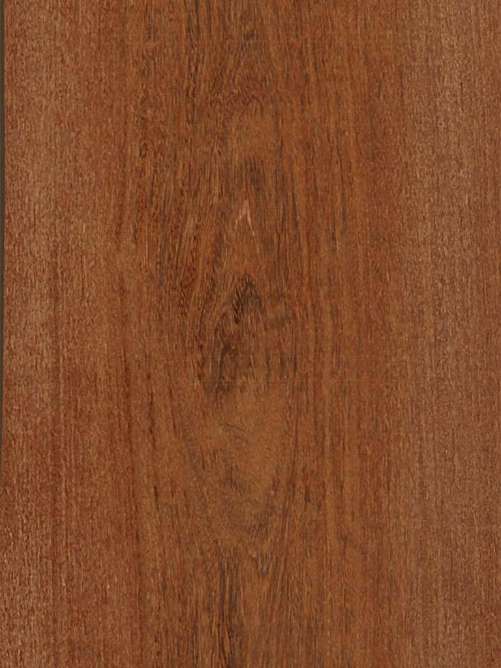 Named for a city in northern Brazil, Sucupira is a South American hardwood with a character similar to rosewood or teak. It has a warm chocolate color with a fine yellow stripe, a lustrous finish, and a lively interlocking grain that is rarely figured. The flat cut veneer produces a beautiful cathedral pattern. Learn About Veneer Cut & Matching
Named for a city in northern Brazil, Sucupira is a South American hardwood with a character similar to rosewood or teak. It has a warm chocolate color with a fine yellow stripe, a lustrous finish, and a lively interlocking grain that is rarely figured. The flat cut veneer produces a beautiful cathedral pattern. Learn About Veneer Cut & Matching -
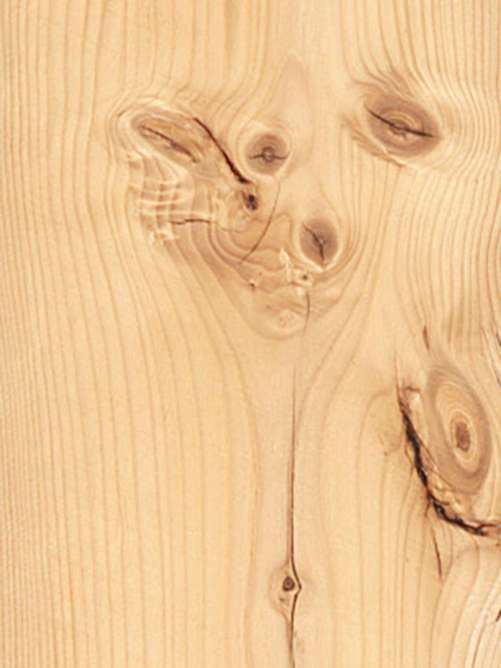 Vintage knotty spruce is sliced from hand-hewn beams reclaimed from old farmhouses, barns, or commercial buildings. Preserving the natural character of the wood, the beams are washed, de-nailed, dimensionally sorted, and then sliced into veneer. The veneer is generally straight-grained with knotty characteristics that include splits, checks, nail holes, and occasional discolorations that reflect its history and give the wood a rustic feel. This veneer is sliced at 1.4 mm and intended for use in random sequences. Learn About Veneer Cut & Matching
Vintage knotty spruce is sliced from hand-hewn beams reclaimed from old farmhouses, barns, or commercial buildings. Preserving the natural character of the wood, the beams are washed, de-nailed, dimensionally sorted, and then sliced into veneer. The veneer is generally straight-grained with knotty characteristics that include splits, checks, nail holes, and occasional discolorations that reflect its history and give the wood a rustic feel. This veneer is sliced at 1.4 mm and intended for use in random sequences. Learn About Veneer Cut & Matching -
 Pale yellow-gray to nearly white, sen is Japanese ash popular in Japan for both furniture and interiors. It has a straight, fine grain when cut on the quarter and a nice cathedral character with a fine grain on either side of the heart when flat cut. When marked with a Pommele figure, this veneer is called "Tamo". Sen is an excellent choice for a variety of interiors aesthetics including modern, Asian, and minimalist designs. Learn About Veneer Cut & Matching
Pale yellow-gray to nearly white, sen is Japanese ash popular in Japan for both furniture and interiors. It has a straight, fine grain when cut on the quarter and a nice cathedral character with a fine grain on either side of the heart when flat cut. When marked with a Pommele figure, this veneer is called "Tamo". Sen is an excellent choice for a variety of interiors aesthetics including modern, Asian, and minimalist designs. Learn About Veneer Cut & Matching -
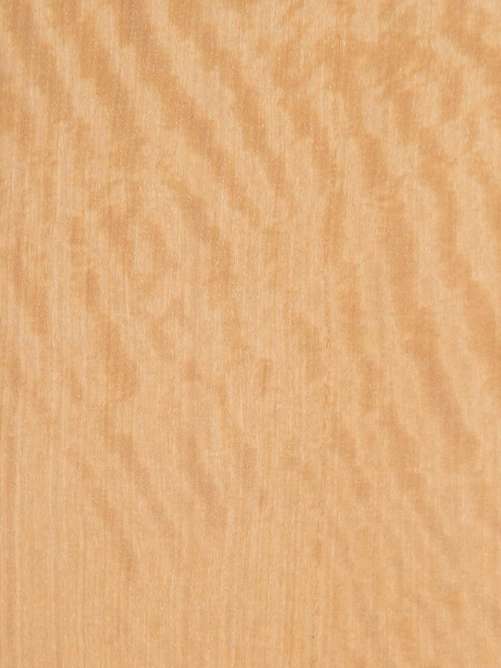 Satinwood is a pale gold wood with a rippled grain and straight striping. Typically figured, Satinwood often produces a bee’s wing or mottle figure. Satinwood is used for decorative inlays on table and conference tops. It is also used for high-quality furniture and cabinets. Select logs are sliced to produce extremely attractive veneers for high-end architectural paneling, cabinets, and marquetry. Learn About Veneer Cut & Matching
Satinwood is a pale gold wood with a rippled grain and straight striping. Typically figured, Satinwood often produces a bee’s wing or mottle figure. Satinwood is used for decorative inlays on table and conference tops. It is also used for high-quality furniture and cabinets. Select logs are sliced to produce extremely attractive veneers for high-end architectural paneling, cabinets, and marquetry. Learn About Veneer Cut & Matching -
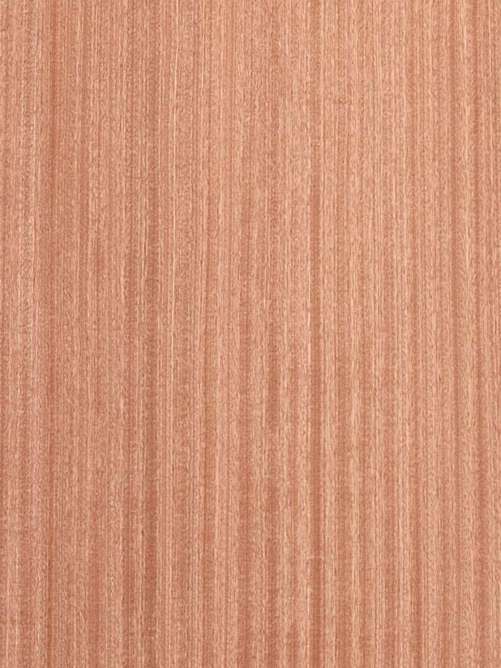 Sapele varies in color from log to log but is generally medium to dark red-brown. Finishing brings out an intense depth of color and highlights its natural luster, which is similar to mahogany. This veneer has a fine grain, a distinct and desirable stripe formation, and often carries a lively figure. Flat cut Sapele shows the characteristic heart or cathedral grain The highly prized Pommele Sapele is intensely marked with a swirly grain and randomly interspersed blisters, or Pommele markings. A high degree of luster gives Sapele a three-dimensional effect. Learn About Veneer Cut & Matching
Sapele varies in color from log to log but is generally medium to dark red-brown. Finishing brings out an intense depth of color and highlights its natural luster, which is similar to mahogany. This veneer has a fine grain, a distinct and desirable stripe formation, and often carries a lively figure. Flat cut Sapele shows the characteristic heart or cathedral grain The highly prized Pommele Sapele is intensely marked with a swirly grain and randomly interspersed blisters, or Pommele markings. A high degree of luster gives Sapele a three-dimensional effect. Learn About Veneer Cut & Matching -
 Sapele varies in color from log to log but is generally medium to dark red-brown. Finishing brings out an intense depth of color and highlights its natural luster, which is similar to mahogany. This veneer has a fine grain, a distinct and desirable stripe formation, and often carries a lively figure. Flat cut Sapele shows the characteristic heart or cathedral grain The highly prized Pommele Sapele is intensely marked with a swirly grain and randomly interspersed blisters, or Pommele markings. A high degree of luster gives Sapele a three-dimensional effect. Learn About Veneer Cut & Matching
Sapele varies in color from log to log but is generally medium to dark red-brown. Finishing brings out an intense depth of color and highlights its natural luster, which is similar to mahogany. This veneer has a fine grain, a distinct and desirable stripe formation, and often carries a lively figure. Flat cut Sapele shows the characteristic heart or cathedral grain The highly prized Pommele Sapele is intensely marked with a swirly grain and randomly interspersed blisters, or Pommele markings. A high degree of luster gives Sapele a three-dimensional effect. Learn About Veneer Cut & Matching -
 Sapele varies in color from log to log but is generally medium to dark red-brown. Finishing brings out an intense depth of color and highlights its natural luster, which is similar to mahogany. This veneer has a fine grain, a distinct and desirable stripe formation, and often carries a lively figure. Flat cut Sapele shows the characteristic heart or cathedral grain The highly prized Pommele Sapele is intensely marked with a swirly grain and randomly interspersed blisters, or Pommele markings. A high degree of luster gives Sapele a three-dimensional effect. Learn About Veneer Cut & Matching
Sapele varies in color from log to log but is generally medium to dark red-brown. Finishing brings out an intense depth of color and highlights its natural luster, which is similar to mahogany. This veneer has a fine grain, a distinct and desirable stripe formation, and often carries a lively figure. Flat cut Sapele shows the characteristic heart or cathedral grain The highly prized Pommele Sapele is intensely marked with a swirly grain and randomly interspersed blisters, or Pommele markings. A high degree of luster gives Sapele a three-dimensional effect. Learn About Veneer Cut & Matching -
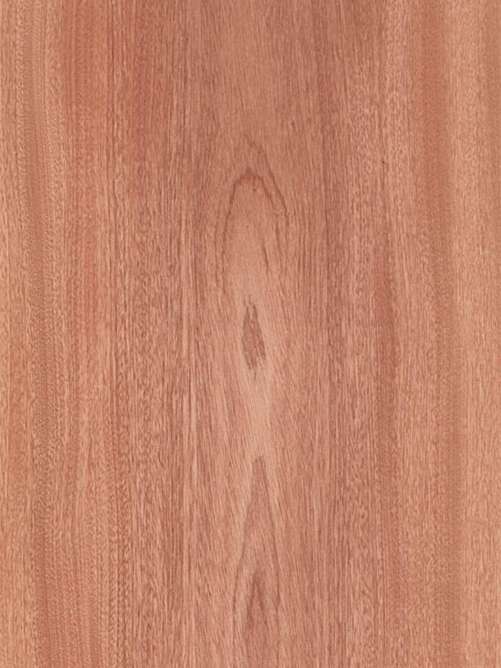 Sapele varies in color from log to log but is generally medium to dark red-brown. Finishing brings out an intense depth of color and highlights its natural luster, which is similar to mahogany. This veneer has a fine grain, a distinct and desirable stripe formation, and often carries a lively figure. Flat cut Sapele shows the characteristic heart or cathedral grain The highly prized Pommele Sapele is intensely marked with a swirly grain and randomly interspersed blisters, or Pommele markings. A high degree of luster gives Sapele a three-dimensional effect. Learn About Veneer Cut & Matching
Sapele varies in color from log to log but is generally medium to dark red-brown. Finishing brings out an intense depth of color and highlights its natural luster, which is similar to mahogany. This veneer has a fine grain, a distinct and desirable stripe formation, and often carries a lively figure. Flat cut Sapele shows the characteristic heart or cathedral grain The highly prized Pommele Sapele is intensely marked with a swirly grain and randomly interspersed blisters, or Pommele markings. A high degree of luster gives Sapele a three-dimensional effect. Learn About Veneer Cut & Matching -
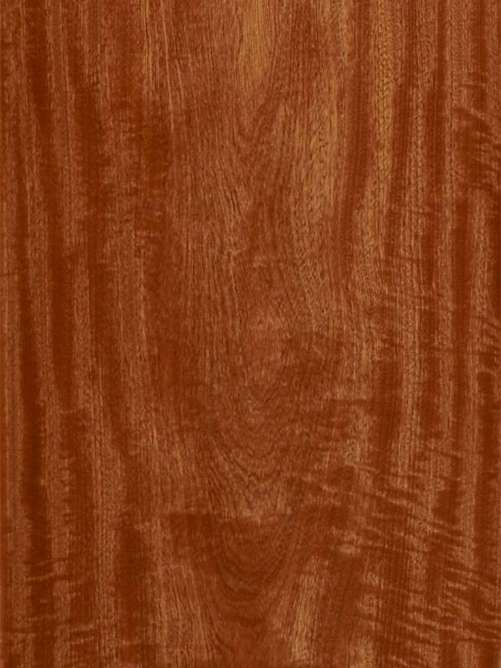 Sapele varies in color from log to log but is generally medium to dark red-brown. Finishing brings out an intense depth of color and highlights its natural luster, which is similar to mahogany. This veneer has a fine grain, a distinct and desirable stripe formation, and often carries a lively figure. Flat cut Sapele shows the characteristic heart or cathedral grain The highly prized Pommele Sapele is intensely marked with a swirly grain and randomly interspersed blisters, or Pommele markings. A high degree of luster gives Sapele a three-dimensional effect. Learn About Veneer Cut & Matching
Sapele varies in color from log to log but is generally medium to dark red-brown. Finishing brings out an intense depth of color and highlights its natural luster, which is similar to mahogany. This veneer has a fine grain, a distinct and desirable stripe formation, and often carries a lively figure. Flat cut Sapele shows the characteristic heart or cathedral grain The highly prized Pommele Sapele is intensely marked with a swirly grain and randomly interspersed blisters, or Pommele markings. A high degree of luster gives Sapele a three-dimensional effect. Learn About Veneer Cut & Matching -
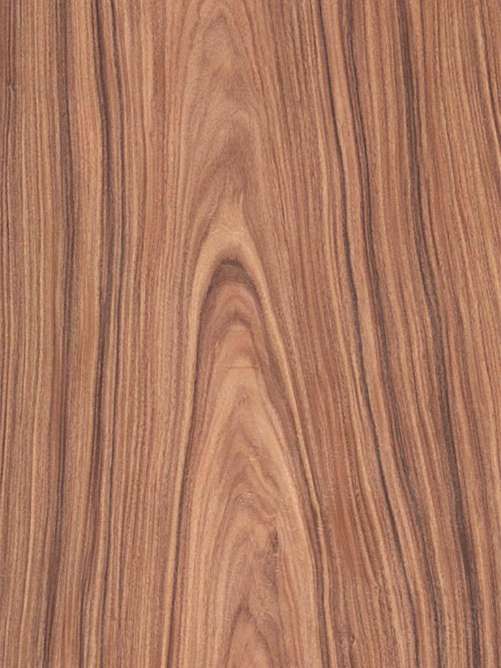 This is one of the world’s most loved and prized veneers. It ranges in color from lustrous chocolate-brown to purple-black with cream-colored sapwood—all very saturated with vivid contrast. It has a lively variegated stripe and occasional bee’s wing figure and, when flat cut, produces a characteristic cathedral pattern. Increasingly used as a substitute for the extremely rare but prized Rio rosewood. Learn About Veneer Cut & Matching
This is one of the world’s most loved and prized veneers. It ranges in color from lustrous chocolate-brown to purple-black with cream-colored sapwood—all very saturated with vivid contrast. It has a lively variegated stripe and occasional bee’s wing figure and, when flat cut, produces a characteristic cathedral pattern. Increasingly used as a substitute for the extremely rare but prized Rio rosewood. Learn About Veneer Cut & Matching -
 Madagascar Rosewood can be found in various shades of deep brown to reddish-brown. The veneer has a medium to fine texture and ribbon grain, typical of rosewoods, with pronounced dark red, vertical lines that can be wavy in some logs. Darker streaks are common and can produce a spiderweb-like figure. Flat cut, the log produces a swirly, burl-like heart. Learn About Veneer Cut & Matching
Madagascar Rosewood can be found in various shades of deep brown to reddish-brown. The veneer has a medium to fine texture and ribbon grain, typical of rosewoods, with pronounced dark red, vertical lines that can be wavy in some logs. Darker streaks are common and can produce a spiderweb-like figure. Flat cut, the log produces a swirly, burl-like heart. Learn About Veneer Cut & Matching -
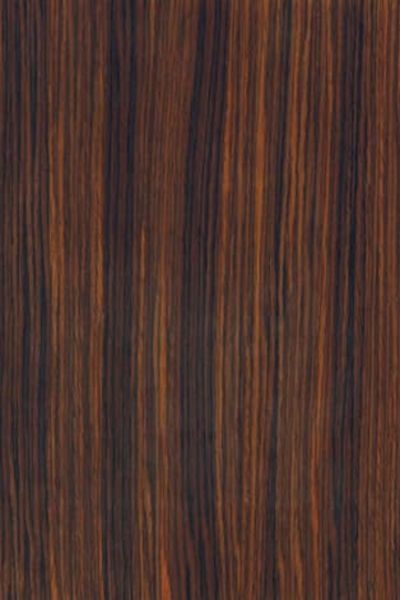 This elegant, tobacco-colored veneer is similar to Brazilian Rosewood but somewhat less contrasty in color. Rich hues range from dark chocolate brown to violet and even black in lively combinations that produce a one-of-a-kind look prized for architectural use. Flat cut, the wood shows a beautiful cathedral pattern; quartered it produces a straight or broken stripe effect. Learn About Veneer Cut & Matching
This elegant, tobacco-colored veneer is similar to Brazilian Rosewood but somewhat less contrasty in color. Rich hues range from dark chocolate brown to violet and even black in lively combinations that produce a one-of-a-kind look prized for architectural use. Flat cut, the wood shows a beautiful cathedral pattern; quartered it produces a straight or broken stripe effect. Learn About Veneer Cut & Matching -
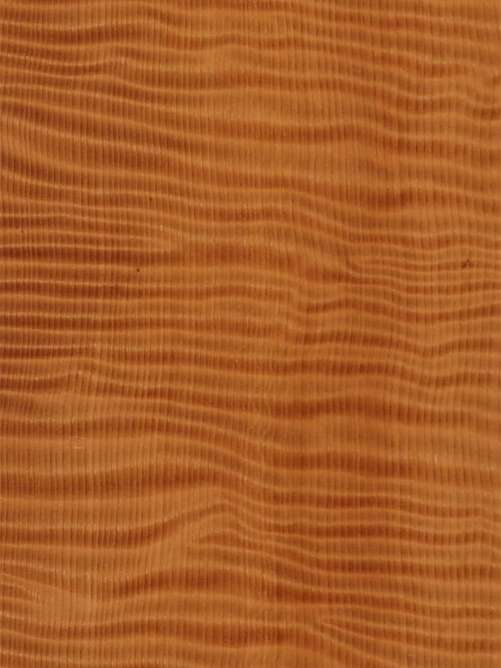 Among the largest and tallest trees on earth, the redwood produces a rich, warm, inviting veneer that’s as impressive as the tree. Uniformly deep reddish-brown, the grain in quarter cut veneer is beautifully striped or figured by fine markings. Burled veneer (also known as vavona burl) is sliced from huge, prolific burl growths found on occasional redwoods, producing some of the largest and most uniforms burled veneers in the world. Learn About Veneer Cut & Matching
Among the largest and tallest trees on earth, the redwood produces a rich, warm, inviting veneer that’s as impressive as the tree. Uniformly deep reddish-brown, the grain in quarter cut veneer is beautifully striped or figured by fine markings. Burled veneer (also known as vavona burl) is sliced from huge, prolific burl growths found on occasional redwoods, producing some of the largest and most uniforms burled veneers in the world. Learn About Veneer Cut & Matching -
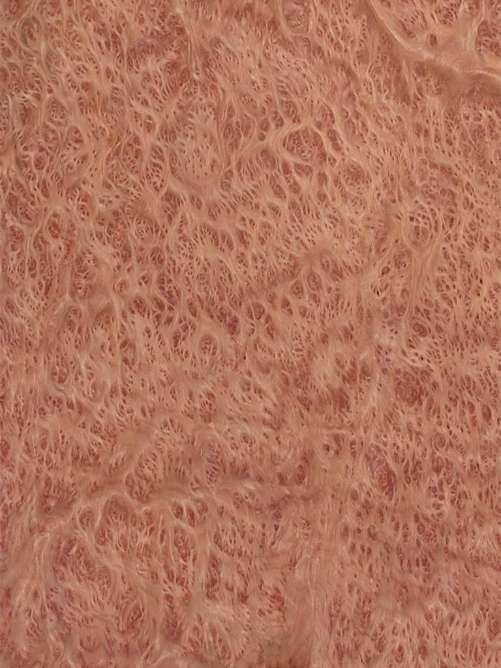 Among the largest and tallest trees on earth, the redwood produces a rich, warm, inviting veneer that’s as impressive as the tree. Uniformly deep reddish-brown, the grain in quarter cut veneer is beautifully striped or figured by fine markings. Burled veneer (also known as vavona burl) is sliced from huge, prolific burl growths found on occasional redwoods, producing some of the largest and most uniforms burled veneers in the world. Learn About Veneer Cut & Matching
Among the largest and tallest trees on earth, the redwood produces a rich, warm, inviting veneer that’s as impressive as the tree. Uniformly deep reddish-brown, the grain in quarter cut veneer is beautifully striped or figured by fine markings. Burled veneer (also known as vavona burl) is sliced from huge, prolific burl growths found on occasional redwoods, producing some of the largest and most uniforms burled veneers in the world. Learn About Veneer Cut & Matching -
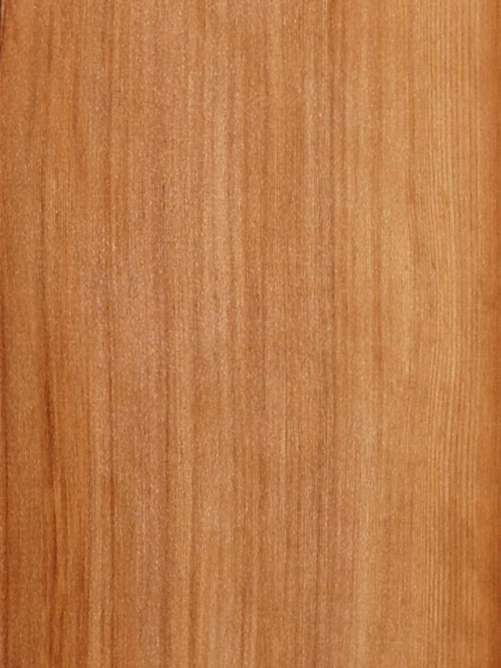 Among the largest and tallest trees on earth, the redwood produces a rich, warm, inviting veneer that’s as impressive as the tree. Uniformly deep reddish-brown, the grain in quarter cut veneer is beautifully striped or figured by fine markings. Burled veneer (also known as vavona burl) is sliced from huge, prolific burl growths found on occasional redwoods, producing some of the largest and most uniforms burled veneers in the world. Learn About Veneer Cut & Matching
Among the largest and tallest trees on earth, the redwood produces a rich, warm, inviting veneer that’s as impressive as the tree. Uniformly deep reddish-brown, the grain in quarter cut veneer is beautifully striped or figured by fine markings. Burled veneer (also known as vavona burl) is sliced from huge, prolific burl growths found on occasional redwoods, producing some of the largest and most uniforms burled veneers in the world. Learn About Veneer Cut & Matching -
 This rare and beautiful, light-colored Central American tree grows in a dog-leg fashion, making straight sections over 10’ uncommon. Because it must be cut when the sap is low, native loggers watch the phases of the moon, waiting for the waning phases when the sap is limited to harvest. Yellowish-red in color, and streaked by brown, red, or orange, the wood produces a range of beautiful figures and is highly prized for architectural work. Learn About Veneer Cut & Matching
This rare and beautiful, light-colored Central American tree grows in a dog-leg fashion, making straight sections over 10’ uncommon. Because it must be cut when the sap is low, native loggers watch the phases of the moon, waiting for the waning phases when the sap is limited to harvest. Yellowish-red in color, and streaked by brown, red, or orange, the wood produces a range of beautiful figures and is highly prized for architectural work. Learn About Veneer Cut & Matching -
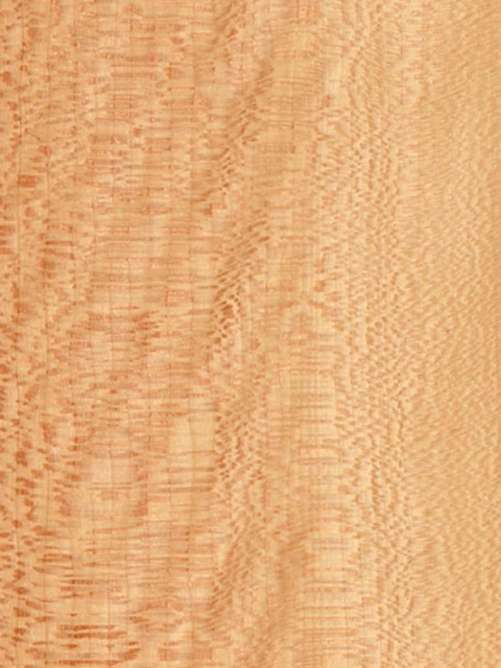 Planetree is a particularly decorative veneer—reddish-gray with a silvery sheen, straight grain, and a lovely small flake in quarter cut veneer, the result of cutting through its extremely regular medullary rays. Found in wetland habitats across Europe, it's said to be the specie of the famed Solitary Tree that legend says marked the spot of the battle between Alexander the Great and Darius in northern Persia. Learn About Veneer Cut & Matching
Planetree is a particularly decorative veneer—reddish-gray with a silvery sheen, straight grain, and a lovely small flake in quarter cut veneer, the result of cutting through its extremely regular medullary rays. Found in wetland habitats across Europe, it's said to be the specie of the famed Solitary Tree that legend says marked the spot of the battle between Alexander the Great and Darius in northern Persia. Learn About Veneer Cut & Matching -
 A cousin of the hickory, the pecan tree was so central to native Americans in the lower Mississippi River valley that it was associated with the Great Spirit. Today the tree is cultivated in southern orchards for nuts and is prized as a fine cabinet wood. It has a typically straight grain, a medium texture, low natural sheen, a medium reddish-brown heartwood and paler yellow sapwood, and maybe figured. Pecan stains well and is sometimes stained to match or replicate other woods. Learn About Veneer Cut & Matching
A cousin of the hickory, the pecan tree was so central to native Americans in the lower Mississippi River valley that it was associated with the Great Spirit. Today the tree is cultivated in southern orchards for nuts and is prized as a fine cabinet wood. It has a typically straight grain, a medium texture, low natural sheen, a medium reddish-brown heartwood and paler yellow sapwood, and maybe figured. Pecan stains well and is sometimes stained to match or replicate other woods. Learn About Veneer Cut & Matching -
 This European fruit tree produces a very fine-grained wood with a uniform texture and a partial flame that is both beautiful and decorative. The wood is often pith-marked and occurs in colors from rosy cream to light reddish brown in both plain and figured logs. When fumed, pearwood turns a rich, dark brown; when stained black, it provides an excellent substitute for ebony. Learn About Veneer Cut & Matching
This European fruit tree produces a very fine-grained wood with a uniform texture and a partial flame that is both beautiful and decorative. The wood is often pith-marked and occurs in colors from rosy cream to light reddish brown in both plain and figured logs. When fumed, pearwood turns a rich, dark brown; when stained black, it provides an excellent substitute for ebony. Learn About Veneer Cut & Matching -
 This wood is indigenous to the Yucatan Peninsula and is prized for its dramatic, saturated coloring—reddish brown with black, violets, and oranges typically mixed in. The grain is typically straight with some irregularity. It’s a premier choice for high-end furniture and interiors and is highly regarded as a tonewood for marimbas and xylophones, earning its nickname “the wood that sings. Learn About Veneer Cut & Matching
This wood is indigenous to the Yucatan Peninsula and is prized for its dramatic, saturated coloring—reddish brown with black, violets, and oranges typically mixed in. The grain is typically straight with some irregularity. It’s a premier choice for high-end furniture and interiors and is highly regarded as a tonewood for marimbas and xylophones, earning its nickname “the wood that sings. Learn About Veneer Cut & Matching -
 At first glance, paldao resembles American black walnut. This enormous tree is most often found along streams and marshy soils in Indonesia and the Philippines. Paldao grows with a remarkable buttress encircling the lower trunk creating 40’ diameter growths which remote tribes believed held sprits. This is a beautiful veneer: a grey-brown background streaked with highly decorative dark stripes. Flat cut wood produces a cathedral pattern; quarter cut wood has a stripy contrast and is often finely figured. Learn About Veneer Cut & Matching
At first glance, paldao resembles American black walnut. This enormous tree is most often found along streams and marshy soils in Indonesia and the Philippines. Paldao grows with a remarkable buttress encircling the lower trunk creating 40’ diameter growths which remote tribes believed held sprits. This is a beautiful veneer: a grey-brown background streaked with highly decorative dark stripes. Flat cut wood produces a cathedral pattern; quarter cut wood has a stripy contrast and is often finely figured. Learn About Veneer Cut & Matching -
 In folklore, white oak is a symbol of strength and longevity. This domestic standard is a bit smaller in diameter than European oak and ranges in color from biscuit to golden brown to somewhat gray. It has a distinctive grain pattern and abundant angular pores that produce a wonderful flake pattern in the quarter and flat cut veneers. Rift cut, the veneer produces a straight, combed grain with minimal flake. Fumed, the wood turns a warm dark brown reminiscent of Arts & Crafts-style furniture. Rustic options have rich character marks and grain variations for a truly rustic look (intended for random matched sequences). Also available in recon and rough cut. Learn About Veneer Cut & Matching
In folklore, white oak is a symbol of strength and longevity. This domestic standard is a bit smaller in diameter than European oak and ranges in color from biscuit to golden brown to somewhat gray. It has a distinctive grain pattern and abundant angular pores that produce a wonderful flake pattern in the quarter and flat cut veneers. Rift cut, the veneer produces a straight, combed grain with minimal flake. Fumed, the wood turns a warm dark brown reminiscent of Arts & Crafts-style furniture. Rustic options have rich character marks and grain variations for a truly rustic look (intended for random matched sequences). Also available in recon and rough cut. Learn About Veneer Cut & Matching -
 In folklore, white oak is a symbol of strength and longevity. This domestic standard is a bit smaller in diameter than European oak and ranges in color from biscuit to golden brown to somewhat gray. It has a distinctive grain pattern and abundant angular pores that produce a wonderful flake pattern in the quarter and flat cut veneers. Rift cut, the veneer produces a straight, combed grain with minimal flake. Fumed, the wood turns a warm dark brown reminiscent of Arts & Crafts-style furniture. Rustic options have rich character marks and grain variations for a truly rustic look (intended for random matched sequences). Also available in recon and rough cut. Learn About Veneer Cut & Matching
In folklore, white oak is a symbol of strength and longevity. This domestic standard is a bit smaller in diameter than European oak and ranges in color from biscuit to golden brown to somewhat gray. It has a distinctive grain pattern and abundant angular pores that produce a wonderful flake pattern in the quarter and flat cut veneers. Rift cut, the veneer produces a straight, combed grain with minimal flake. Fumed, the wood turns a warm dark brown reminiscent of Arts & Crafts-style furniture. Rustic options have rich character marks and grain variations for a truly rustic look (intended for random matched sequences). Also available in recon and rough cut. Learn About Veneer Cut & Matching -
 In folklore, white oak is a symbol of strength and longevity. This domestic standard is a bit smaller in diameter than European oak and ranges in color from biscuit to golden brown to somewhat gray. It has a distinctive grain pattern and abundant angular pores that produce a wonderful flake pattern in the quarter and flat cut veneers. Rift cut, the veneer produces a straight, combed grain with minimal flake. Fumed, the wood turns a warm dark brown reminiscent of Arts & Crafts-style furniture. Rustic options have rich character marks and grain variations for a truly rustic look (intended for random matched sequences). Also available in recon and rough cut. Learn About Veneer Cut & Matching
In folklore, white oak is a symbol of strength and longevity. This domestic standard is a bit smaller in diameter than European oak and ranges in color from biscuit to golden brown to somewhat gray. It has a distinctive grain pattern and abundant angular pores that produce a wonderful flake pattern in the quarter and flat cut veneers. Rift cut, the veneer produces a straight, combed grain with minimal flake. Fumed, the wood turns a warm dark brown reminiscent of Arts & Crafts-style furniture. Rustic options have rich character marks and grain variations for a truly rustic look (intended for random matched sequences). Also available in recon and rough cut. Learn About Veneer Cut & Matching -
 In folklore, white oak is a symbol of strength and longevity. This domestic standard is a bit smaller in diameter than European oak and ranges in color from biscuit to golden brown to somewhat gray. It has a distinctive grain pattern and abundant angular pores that produce a wonderful flake pattern in the quarter and flat cut veneers. Rift cut, the veneer produces a straight, combed grain with minimal flake. Fumed, the wood turns a warm dark brown reminiscent of Arts & Crafts-style furniture. Rustic options have rich character marks and grain variations for a truly rustic look (intended for random matched sequences). Also available in recon and rough cut. Learn About Veneer Cut & Matching
In folklore, white oak is a symbol of strength and longevity. This domestic standard is a bit smaller in diameter than European oak and ranges in color from biscuit to golden brown to somewhat gray. It has a distinctive grain pattern and abundant angular pores that produce a wonderful flake pattern in the quarter and flat cut veneers. Rift cut, the veneer produces a straight, combed grain with minimal flake. Fumed, the wood turns a warm dark brown reminiscent of Arts & Crafts-style furniture. Rustic options have rich character marks and grain variations for a truly rustic look (intended for random matched sequences). Also available in recon and rough cut. Learn About Veneer Cut & Matching -
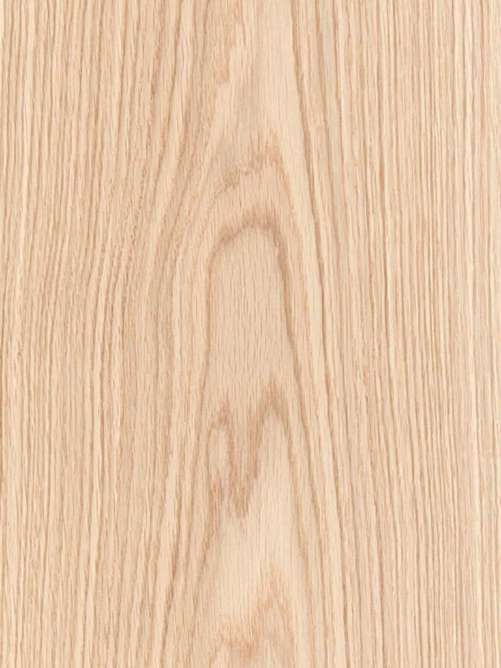 In folklore, white oak is a symbol of strength and longevity. This domestic standard is a bit smaller in diameter than European oak and ranges in color from biscuit to golden brown to somewhat gray. It has a distinctive grain pattern and abundant angular pores that produce a wonderful flake pattern in the quarter and flat cut veneers. Rift cut, the veneer produces a straight, combed grain with minimal flake. Fumed, the wood turns a warm dark brown reminiscent of Arts & Crafts-style furniture. Rustic options have rich character marks and grain variations for a truly rustic look (intended for random matched sequences). Also available in recon and rough cut. Learn About Veneer Cut & Matching
In folklore, white oak is a symbol of strength and longevity. This domestic standard is a bit smaller in diameter than European oak and ranges in color from biscuit to golden brown to somewhat gray. It has a distinctive grain pattern and abundant angular pores that produce a wonderful flake pattern in the quarter and flat cut veneers. Rift cut, the veneer produces a straight, combed grain with minimal flake. Fumed, the wood turns a warm dark brown reminiscent of Arts & Crafts-style furniture. Rustic options have rich character marks and grain variations for a truly rustic look (intended for random matched sequences). Also available in recon and rough cut. Learn About Veneer Cut & Matching -
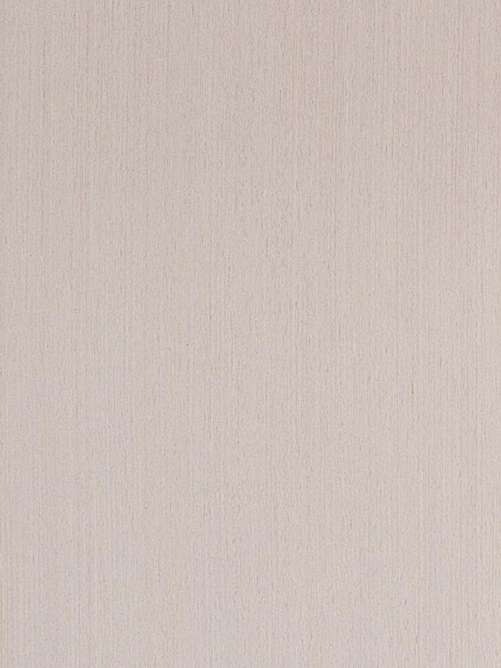 Reconstituted Veneer is a rotary cut veneer created from fast-growing secondary species, then dyed, layered, laminated, and laid up with grain that replicates a natural species. It offers outstanding consistency in color and grain. Learn About Veneer Cut & Matching
Reconstituted Veneer is a rotary cut veneer created from fast-growing secondary species, then dyed, layered, laminated, and laid up with grain that replicates a natural species. It offers outstanding consistency in color and grain. Learn About Veneer Cut & Matching -
 North American oak is well suited for rustic or modern interiors. While different growing conditions can produce a range of colors, in general, it’s slightly redder, more uniform in color, and has a less prominent flake figure than white oak. The grain is firm and straight, somewhat coarse with large pores. Rift cut veneer produces a very straight, combed grain effect. Learn About Veneer Cut & Matching
North American oak is well suited for rustic or modern interiors. While different growing conditions can produce a range of colors, in general, it’s slightly redder, more uniform in color, and has a less prominent flake figure than white oak. The grain is firm and straight, somewhat coarse with large pores. Rift cut veneer produces a very straight, combed grain effect. Learn About Veneer Cut & Matching -
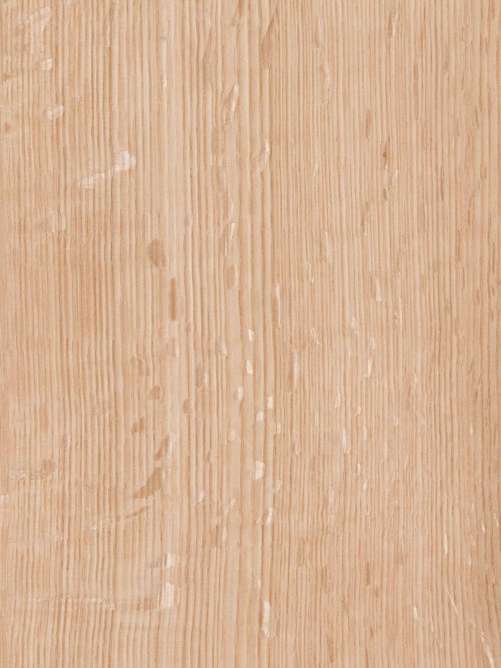 North American oak is well suited for rustic or modern interiors. While different growing conditions can produce a range of colors, in general, it’s slightly redder, more uniform in color, and has a less prominent flake figure than white oak. The grain is firm and straight, somewhat coarse with large pores. Rift cut veneer produces a very straight, combed grain effect. Learn About Veneer Cut & Matching
North American oak is well suited for rustic or modern interiors. While different growing conditions can produce a range of colors, in general, it’s slightly redder, more uniform in color, and has a less prominent flake figure than white oak. The grain is firm and straight, somewhat coarse with large pores. Rift cut veneer produces a very straight, combed grain effect. Learn About Veneer Cut & Matching -
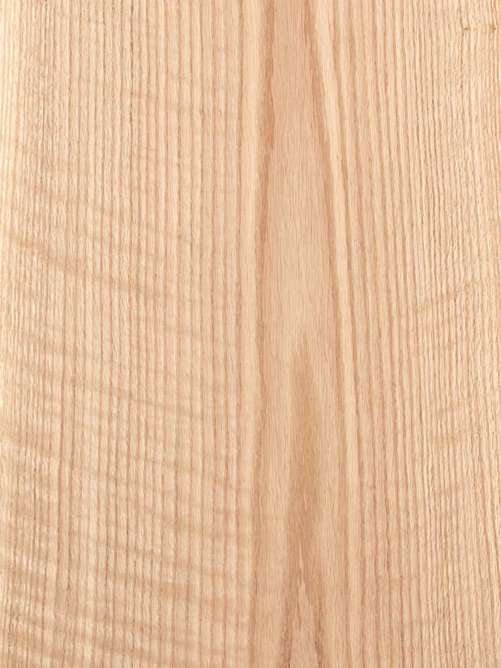 North American oak is well suited for rustic or modern interiors. While different growing conditions can produce a range of colors, in general, it’s slightly redder, more uniform in color, and has a less prominent flake figure than white oak. The grain is firm and straight, somewhat coarse with large pores. Rift cut veneer produces a very straight, combed grain effect. Learn About Veneer Cut & Matching
North American oak is well suited for rustic or modern interiors. While different growing conditions can produce a range of colors, in general, it’s slightly redder, more uniform in color, and has a less prominent flake figure than white oak. The grain is firm and straight, somewhat coarse with large pores. Rift cut veneer produces a very straight, combed grain effect. Learn About Veneer Cut & Matching -
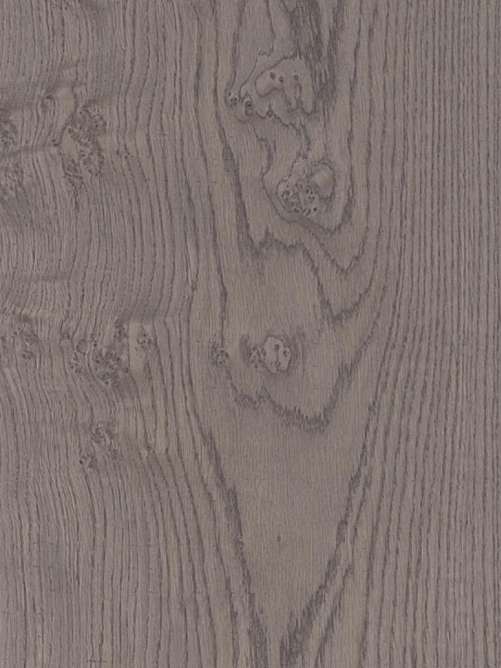 One of the most common trees in European forests, this oak has long been associated with the mythological gods due to its immense size, strength, and longevity. Like most oaks, the grain is straight with broad rays that produce a lively flake effect in flat or quarter cut wood and straight combed grain in rift cut. The golden-brown wood is slightly darker than American white oak and slightly lighter than English brown oak. Fumed veneer produces a rich chocolate-brown color similar to tropical and African woods. CoCo (color-imbued) options are available in several shades of gray and brown. Vintage oak is sliced from the hand-hewn beams of reclaimed wood from old barns and farmhouses across Europe; this rustic looking veneer is intended for use in random matched sequences. Learn About Veneer Cut & Matching
One of the most common trees in European forests, this oak has long been associated with the mythological gods due to its immense size, strength, and longevity. Like most oaks, the grain is straight with broad rays that produce a lively flake effect in flat or quarter cut wood and straight combed grain in rift cut. The golden-brown wood is slightly darker than American white oak and slightly lighter than English brown oak. Fumed veneer produces a rich chocolate-brown color similar to tropical and African woods. CoCo (color-imbued) options are available in several shades of gray and brown. Vintage oak is sliced from the hand-hewn beams of reclaimed wood from old barns and farmhouses across Europe; this rustic looking veneer is intended for use in random matched sequences. Learn About Veneer Cut & Matching -
 One of the most common trees in European forests, this oak has long been associated with the mythological gods due to its immense size, strength, and longevity. Like most oaks, the grain is straight with broad rays that produce a lively flake effect in flat or quarter cut wood and straight combed grain in rift cut. The golden-brown wood is slightly darker than American white oak and slightly lighter than English brown oak. Fumed veneer produces a rich chocolate-brown color similar to tropical and African woods. CoCo (color-imbued) options are available in several shades of gray and brown. Vintage oak is sliced from the hand-hewn beams of reclaimed wood from old barns and farmhouses across Europe; this rustic looking veneer is intended for use in random matched sequences. Learn About Veneer Cut & Matching
One of the most common trees in European forests, this oak has long been associated with the mythological gods due to its immense size, strength, and longevity. Like most oaks, the grain is straight with broad rays that produce a lively flake effect in flat or quarter cut wood and straight combed grain in rift cut. The golden-brown wood is slightly darker than American white oak and slightly lighter than English brown oak. Fumed veneer produces a rich chocolate-brown color similar to tropical and African woods. CoCo (color-imbued) options are available in several shades of gray and brown. Vintage oak is sliced from the hand-hewn beams of reclaimed wood from old barns and farmhouses across Europe; this rustic looking veneer is intended for use in random matched sequences. Learn About Veneer Cut & Matching -
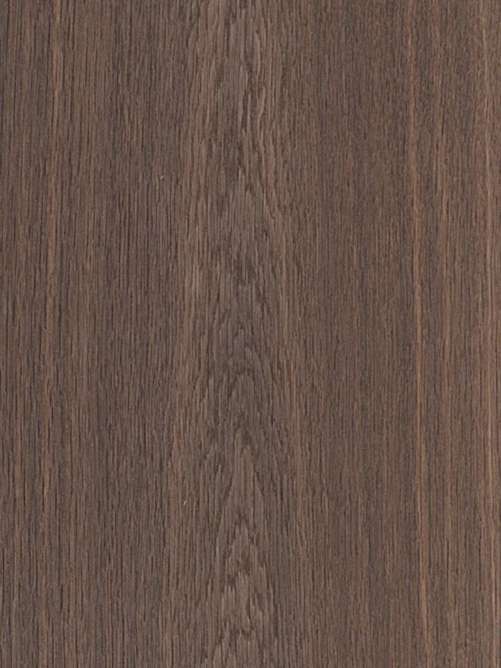 One of the most common trees in European forests, this oak has long been associated with the mythological gods due to its immense size, strength, and longevity. Like most oaks, the grain is straight with broad rays that produce a lively flake effect in flat or quarter cut wood and straight combed grain in rift cut. The golden-brown wood is slightly darker than American white oak and slightly lighter than English brown oak. Fumed veneer produces a rich chocolate-brown color similar to tropical and African woods. CoCo (color-imbued) options are available in several shades of gray and brown. Vintage oak is sliced from the hand-hewn beams of reclaimed wood from old barns and farmhouses across Europe; this rustic looking veneer is intended for use in random matched sequences. Learn About Veneer Cut & Matching
One of the most common trees in European forests, this oak has long been associated with the mythological gods due to its immense size, strength, and longevity. Like most oaks, the grain is straight with broad rays that produce a lively flake effect in flat or quarter cut wood and straight combed grain in rift cut. The golden-brown wood is slightly darker than American white oak and slightly lighter than English brown oak. Fumed veneer produces a rich chocolate-brown color similar to tropical and African woods. CoCo (color-imbued) options are available in several shades of gray and brown. Vintage oak is sliced from the hand-hewn beams of reclaimed wood from old barns and farmhouses across Europe; this rustic looking veneer is intended for use in random matched sequences. Learn About Veneer Cut & Matching

